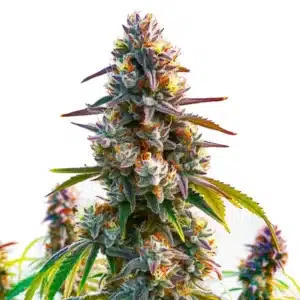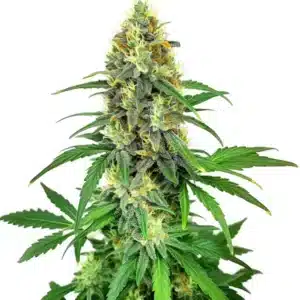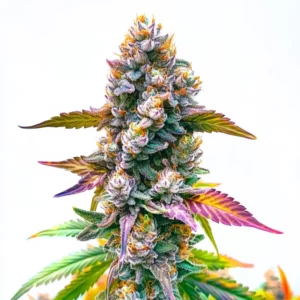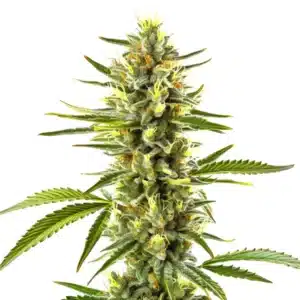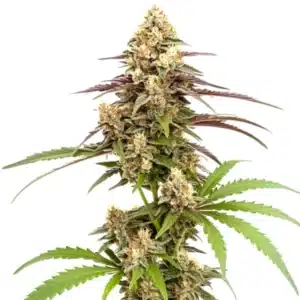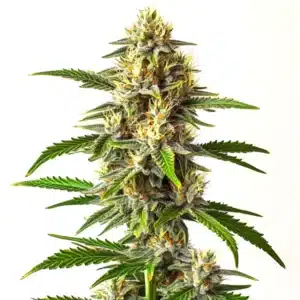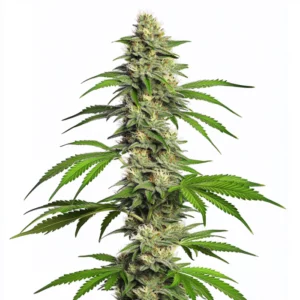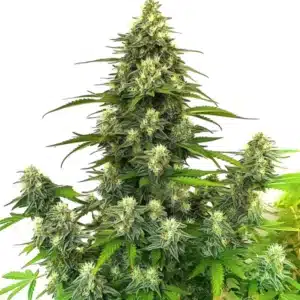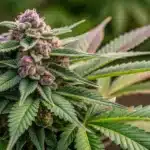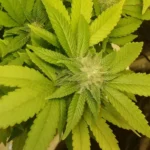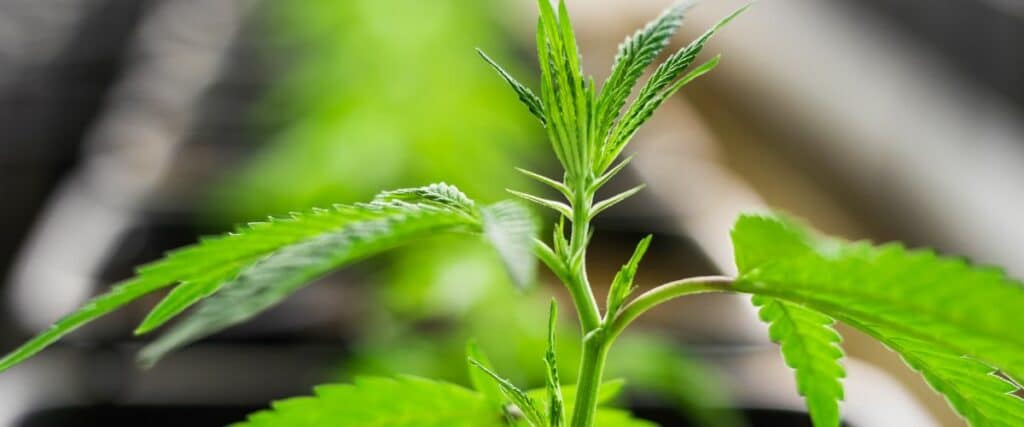
Detecting Early Female Plant Signals Like a Pro!
Throughout much of the 20th century, cannabis blooms were frequently laden with seeds. It wasn’t until the 1970s that a cannabis cultivator discovered the method to cultivate seedless cannabis blooms. The key lies in identifying the early signs of female plant development and preventing female cannabis plants, responsible for the cannabinoid-rich buds we cherish, from being pollinated by male pollen.
Not only do fertilized female cannabis plants yield seed-laden blooms, but they also exhibit significantly lower levels of cannabinoids, terpenes, and flavonoids. This occurs because the plant expends valuable energy on seed production that could otherwise be allocated to bud formation.
Recommended Strains
LA Confidential
|
|
THC | 20% - 26% (Medium) |
|
|
Type | Feminized |
|
|
Yield | Low |
|
|
Phenotype | 90% Indica / 10% Sativa |
LA Confidential Autoflower
|
|
THC | 17% - 21% (Medium) |
|
|
Type | Autoflowering |
|
|
Yield | High |
|
|
Phenotype | 80% Indica / 20% Sativa |
It’s evident that most cannabis cultivators desire an all-female crop. To achieve this, some opt for feminized seeds, which are specifically engineered to yield only female plants. Nonetheless, feminized seeds tend to be pricier than conventional ones, and some argue that plants derived from feminized seeds may have diminished genetic diversity, thereby increasing the risk of genetic abnormalities.
Thus, if you’re cultivating from conventional seeds, it’s imperative to identify and remove male cannabis plants before they can disperse their pollen and jeopardize your harvest.
Recognizing Gender in Cannabis Plants
With the introduction of feminized seeds to the market over twenty years ago, many cultivators found relief in no longer needing to discern and discard male cannabis plants from their crops. Prior to this innovation, all marijuana seeds were what we now refer to as regular, capable of producing both male and female plants. However, in most scenarios, growers have no use for male plants; in fact, they actively seek to distance them from their cultivation space to prevent pollination of the female plants, which would result in seed-filled buds—a circumstance undesirable for most home cultivators unless they aim specifically to produce seeds.
Hence, it becomes imperative to promptly identify and eliminate male plants upon detection. This practice ensures a genuine “seedless” harvest: buds completely devoid of seeds, thus maximizing their cannabinoid and terpene content. Vigilance is crucial, particularly upon observing the initial signs of flowering or the early signs of female plant development when transitioning to the flowering stage in indoor setups. Let’s delve into the specifics of identifying male plants and the optimal timing for their removal.
Promos & Deals
First stage for detect cannabis sex
In the realm of cannabis cultivation, determining the sex of a plant at an early stage is pivotal. Typically, cannabis plants initiate flowering in response to prolonged night periods, signaling their transition to the flowering phase and revealing their gender unequivocally. However, sexual maturity in plants occurs approximately six to eight weeks after seed germination, independent of any photoperiod alterations. This essential knowledge removes the need for stressful interventions like cuttings or photoperiod adjustments to determine plant sex.
Once plants reach the fifth or sixth stage of leaf development, typically around the two-month mark post-germination, they attain sexual maturity. At this juncture, the plants have likely already exhibited their gender characteristics. Barring instances of stress-induced hermaphroditism, the gender identified at this stage tends to persist throughout the plant’s lifecycle. Mastering this technique over time enables growers to diagnose the sex of marijuana plants at an exceptionally early stage.
However, it’s possible that you may not be able to discern the sex until the flowering stage begins. During this period, careful observation becomes crucial as you’ll need to inspect the plants daily to determine their sex promptly. Recognizing the early signs of female plant is essential at this stage to ensure proper care and maximize yield. Typically, one of the initial indicators that the plant has entered the flowering phase is the loss of symmetry in its nodes, which no longer grow opposite each other but rather alternately. This adaptation prepares the plant’s structure for the development of the coveted bud tails.
Another significant sign of flowering is the emergence of the first preflowers, usually located where the buds originate from the main stem. This stage demands accurate identification and removal of male plants without error. While experienced growers may detect the sex of a plant earlier than novices, there’s ample time between identifying males and the point at which they could potentially pollinate your crop, allowing for their safe removal.
It’s advisable to thoroughly inspect the entire plant, not just the top, and conduct subsequent inspections every 2-3 days during the initial 2-3 weeks of flowering to prevent any surprises. Additionally, this routine enables the detection of potential hermaphrodite specimens, which are more challenging to identify as they may produce only a few male flowers on certain branches.
Recognizing Female Cannabis Plants Before Flowering
Determining the gender of marijuana plants before they enter the flowering stage is crucial for growers. Here are three primary methods to achieve this:
- Begin with feminized seeds or clones, ensuring a 100% chance of obtaining female plants.
- While genetic testing can offer early identification of plant sex, it may not always provide reliable results and can be a costly endeavor.
- Inspect the preflowers upon emergence, particularly effective with strains that exhibit rapid development. Look for delicate white hair’s indicative of females or spade-shaped flowers characteristic of males, typically found at the junctions where leaves meet the stem.
For have female plant use feminized seeds or clone
The most reliable method for determining the gender of your plants before they mature is through cloning. Recognizing the early signs of female plant can also help growers identify gender sooner, but cloning provides a more certain approach. This involves taking a clone from any plant, which can be done with both cannabis seeds and clones, ensuring all-female plants. This approach offers numerous advantages, whether you’re a small-scale grower or a large commercial operation.
By cutting one of the branches and placing it in a small cup with growing medium, you can encourage root development over a few days. Once the clone has established roots, it should be placed under a 12/12 light cycle.
As it matures, the plant will reveal its gender. Since clones share the same DNA as their parent plants, they will exhibit the same gender. However, it’s important to note that this method isn’t applicable to autoflowers, which initiate flowering based on age rather than photoperiod. If your aim is to cultivate as many female plants as possible without breeding, using feminized seeds or clones is the most practical approach.

3 Cannabis Strains for Growing Female Plants
As we mentioned before, the best way to have female plants is by growing feminized seeds. With this you will avoid the appearance of males in your crop, and you will also ensure great harvests. Now we leave you here the recommendation of 3 feminized genetics that you should grow in the next outdoor growing season or if you are a gardener with a grow room, indoors.
Skunk x Cinderella 99 Fast Version
Skunk x Cinderella 99 Fast Version is a well-balanced hybrid that offers both a cerebral elevation and a mood-enhancing effect. Moreover, it provides a gentle body relaxation without overwhelming sensations. This accelerated variant reduces the waiting period for a plentiful harvest of delightfully resinous nugs, containing THC levels ranging from 11% to 18%.
This rapid version accelerates bud production, shaving approximately 2 weeks off the overall growth cycle without compromising yield or quality. However, as it remains a photoperiod strain, the vegetative phase retains its standard duration. Nevertheless, the flowering stage lasts only 6 to 8 weeks, compared to the “slow” edition’s 8 to 10 weeks. For outdoor cultivation, harvesting can commence in September.
This hybrid blend embodies the best of both Sativa and Indica effects. It delivers a euphoric elevation that invigorates and uplifts, akin to the clarity that follows a storm, clearing mental fog and enhancing productivity and focus. Simultaneously, it instills a soothing calmness throughout the body, alleviating tension, and stiffness without inducing lethargy.
Overall, it offers a smooth and sustained vitality to tackle tasks effectively. Due to its harmonious balance, Skunk x Cinderella 99 Fast Version is recommended for daytime use, serving as an early morning boost or a midday refresher. Growers should also be aware of the early signs of female plant when cultivating this strain to ensure optimal flowering and yield. Regardless of the timing, users can expect to feel great and accomplish tasks with clarity and vigor. This strain boasts a potent aroma reminiscent of ammonia, inheriting its skunky, earthy scent with a touch of sweetness from its lineage. The flavor profile follows suit with a combination of sweet and sour notes, finishing with a subtle hint of bitterness on the palate.
LA Confidential x Afghan Kush
To comprehend why LA Confidential x Afghan Kush Feminized stands out as an exceptional strain, one must delve into its rich lineage. LA Confidential originated from a meticulous backcrossing of OG LA Affie with its progenitor strain, Afghani, resulting in a complex flavor profile and a profoundly calming high. On the flip side, Afghan Kush, a landrace Indica strain originating from the Hindu Kush region, boasts resin-rich buds that captivate at first glance.
The fusion of these two closely related marijuana strains, renowned for their resin production and robust growth, was destined to yield an unparalleled plant, and LA Confidential x Afghan Kush Fem lives up to that expectation. Exhibiting the defining characteristics of both parent strains, this hybrid offers a perfect conclusion to any day, enveloping users in a euphoric tranquility that dispels negativity and induces deep relaxation, ultimately easing them into slumber with just a few flavorful puffs.
The calming effects of LA Confidential x Afghan Kush Fem extend to medicinal marijuana (MMJ) users, thanks to its potent 14%-19% THC content, rendering it a formidable therapeutic strain. Beyond its capacity to alleviate anxiety and depression, this herb serves as a potent analgesic and anti-inflammatory, providing relief to individuals grappling with various chronic pain conditions.
Given its robust Afghani genetics, LA Confidential x Afghan Kush thrives with minimal effort, making it suitable even for novice growers. Resistant to molds and pests, feminized seeds streamline cultivation, requiring little more than an optimal environment to yield bountiful, resin-coated buds in a mere 8 to 9 weeks.
Purple Gelato Autoflowering
The autoflowering variant of Purple Gelato, in addition to its parental strains Gelato and one robust autoflowering genetics into this immensely popular strain has resulted in a swiftly flowering. Indoor cultivation can yield approximately 1.15 – 1.47 oz/ft² of resinous buds per square meter. Outdoor growers, by the end of the flowering phase, can anticipate harvesting up to 2.82 – 5.29 oz/plant. Purple Gelato Auto cannabis assures an invigorating energetic high complemented by equally robust physical effects.
Initially, a sense of euphoria washes over, dispelling gloomy thoughts and concerns. Subtle psychedelic nuances add depth, potentially enhancing sensory experiences. After some time, intense bodily relaxation spreads, easing tired muscles and inducing a revitalized and serene state. Slightly higher dosages may usher users into a tranquil slumber.
From alleviating stress and anxiety to addressing PTSD and bipolar disorder, the uplifting properties of Purple Gelato Auto hold promise in managing various mood disorders. The sizable, resinous buds emit an indulgent aroma, reminiscent of a delectable dessert. When consumed, the fragrance of Purple Gelato Auto offers a heavenly fusion of lemon sherbet, sweet berry, earthy pine, and fresh herbs. In terms of taste, Purple Gelato Auto buds boast a delightful blend of lime, ripe berries, and pine accents, setting it apart from other THC-rich strains. Growers should also be familiar with the early signs of female plant to ensure a successful cultivation of Purple Gelato Auto and maximize its yield and quality.
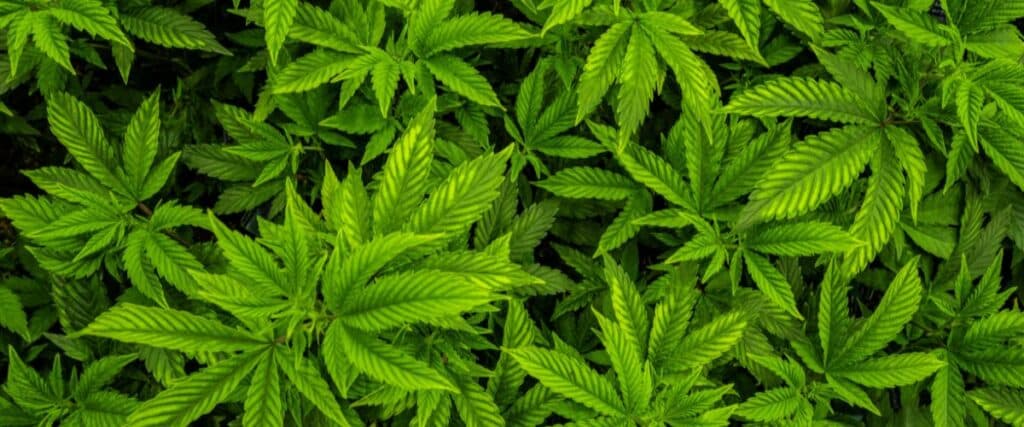
FAQs
What are the early signs of female plant development in cannabis?
The early signs of female plant development include the appearance of delicate white hairs (pistils) at the nodes where branches meet the stem. Additionally, during the flowering stage, female plants show a loss of symmetry in their nodes, which grow alternately rather than opposite each other. Recognizing these signs early helps growers maximize yield and avoid unwanted pollination.
Why is it important to identify and remove male cannabis plants?
Identifying and removing male cannabis plants is crucial because male plants release pollen that fertilizes female plants, causing seed production. Seeded buds contain fewer cannabinoids, terpenes, and flavonoids, reducing the quality and potency of the harvest. Removing males ensures a seedless, high-quality crop with maximum cannabinoid content.
What methods can help ensure an all-female cannabis crop?
To ensure an all-female crop, growers often use feminized seeds or clones, which are genetically engineered or selected to produce only female plants. Cloning female plants is another reliable method, as clones share the same gender as the parent. While genetic testing can also determine sex early, it may be costly and less accessible for most growers.


